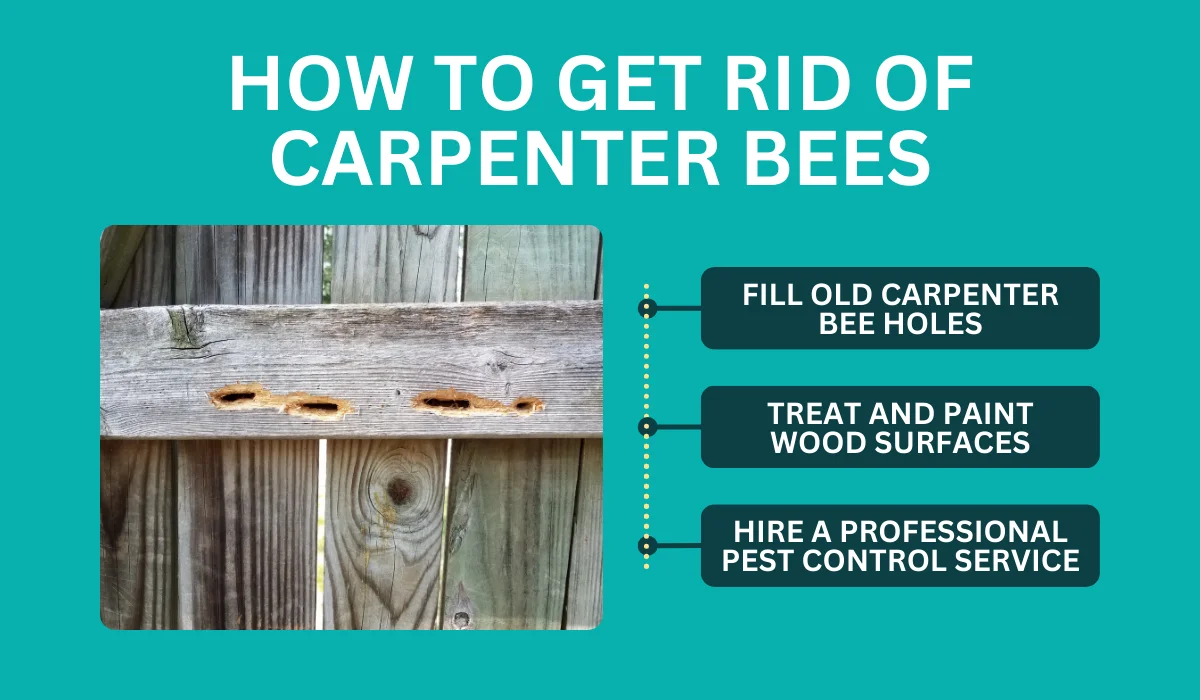Do Carpenter Bees Sting?
If you've ever noticed large, black-and-yellow bees hovering near wooden structures around your home, you may have encountered carpenter bees. While these insects are often mistaken for bumblebees, they have some key differences—including their ability (or inability) to sting.
So, do carpenter bees sting? The short answer is: Yes, but only the females.
Let's take a closer look at carpenter bee behavior, whether you should be concerned, and how to keep them from damaging your property.
Key Takeaways
- Male carpenter bees do not have a stinger, but female bees can sting when they feel threatened.
- A carpenter bee sting causes temporary pain and swelling, but it can trigger a life-threatening allergic reaction in some people.
- Carpenter bees burrow into wood to lay eggs, which weakens structures and attracts woodpeckers, causing further damage.
- To prevent carpenter bees, seal holes, paint wood, or call a pest control professional for serious infestations.
Can Carpenter Bees Sting You?
While carpenter bees can be intimidating due to their size and behavior, their ability to sting depends on their sex.
Male carpenter bees may seem aggressive because they hover around people and even dart toward them, but they do not have a stinger and are completely harmless.
Female carpenter bees do have a stinger but are generally not aggressive. They will only sting if provoked, such as if they are handled or feel their nest is being threatened.
Are Carpenter Bee Stings Dangerous?
For most people, a carpenter bee sting is similar to a sting from a wasp or honeybee. It can cause temporary pain, redness, and swelling at the site of the sting.
For mild reactions, here are some steps to relieve symptoms:
- Wash the area with soap and water to prevent infection.
- Apply a cold compress to reduce swelling.
- Take over-the-counter medications like ibuprofen or acetaminophen for pain relief.
- Use an antihistamine to help with itching and swelling.
However, for individuals with allergies, a carpenter bee sting could trigger a severe or even life-threatening allergic reaction like difficulty breathing or anaphylaxis. This requires immediate medical attention.
If you are stung and experience a severe reaction, use epinephrine if prescribed and seek emergency care immediately.
Why Are Carpenter Bees a Problem?
Carpenter bees belong to the genus Xylocopa and are considered solitary bees, meaning they do not form large hives like honeybees or wasps.
Although they are important pollinators in the ecosystem, they can cause structural damage by burrowing into wooden structures. They prefer untreated wood and will create tunnels where they lay their larvae.
Over time, these holes can weaken porches, eaves, fences, and decks.
Additionally, the presence of carpenter bee nests can attract woodpeckers, which peck at the wood to reach the larvae inside—leading to further damage.
How to Get Rid of Carpenter Bees

If you have a carpenter bee infestation, taking the right steps to relocate them and prevent their return is crucial.
Fill Old Carpenter Bee Holes
Carpenter bees often reuse old bore holes, so sealing them with caulk or wood putty will discourage them from coming back.
Treat and Paint Wood Surfaces
Bees prefer bare wood, so painting or staining your deck, porch, and other exposed wooden structures can deter them.
Hire a Professional Pest Control Service
If carpenter bees are causing significant damage to your home, consider calling a pest control expert to safely and effectively relocate them. With experts, they can locate the nesting sites, capturing the bees without using harmful sprays.
How to Prevent Future Carpenter Bee Problems
To keep carpenter bees away from your home in the future, try these preventive measures:
- Keep all outdoor wood surfaces painted or sealed.
- Replace softwoods like pine with hardwoods that are less attractive to carpenter bees.
- Regularly inspect wooden structures for signs of carpenter bees, such as the presence of sawdust or holes.
Protect Your Home with Expert Bee and Wasp Control
If you’re dealing with carpenter bees, wasps, or hornets, we’re here to help. At Native Pest Management, we provide expert stinging insect control, from identifying and removing carpenter bee nests to treating wasp and hornet infestations. Our team safely eliminates the problem and seals entry points to prevent them from coming back.
Contact us today for professional, pet-friendly pest control to keep your home protected year-round.
